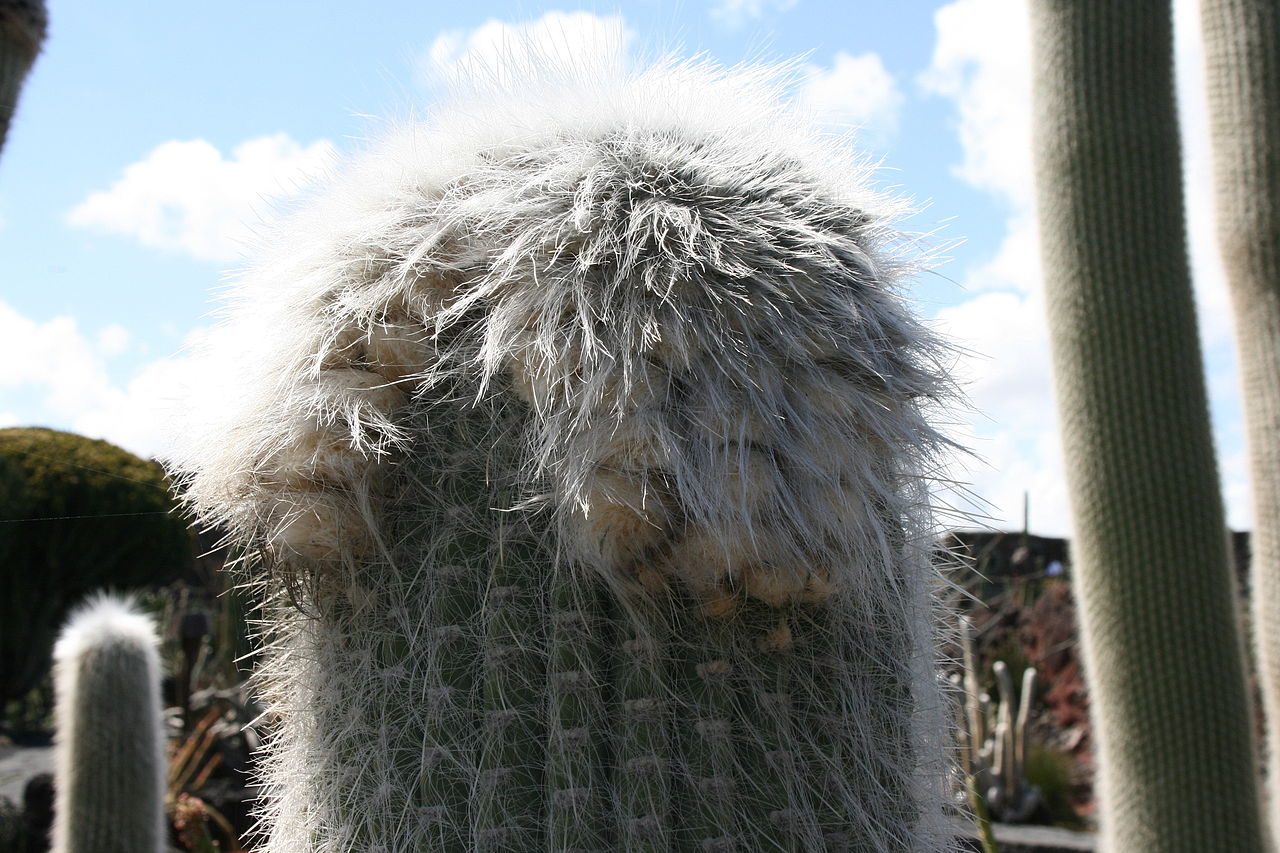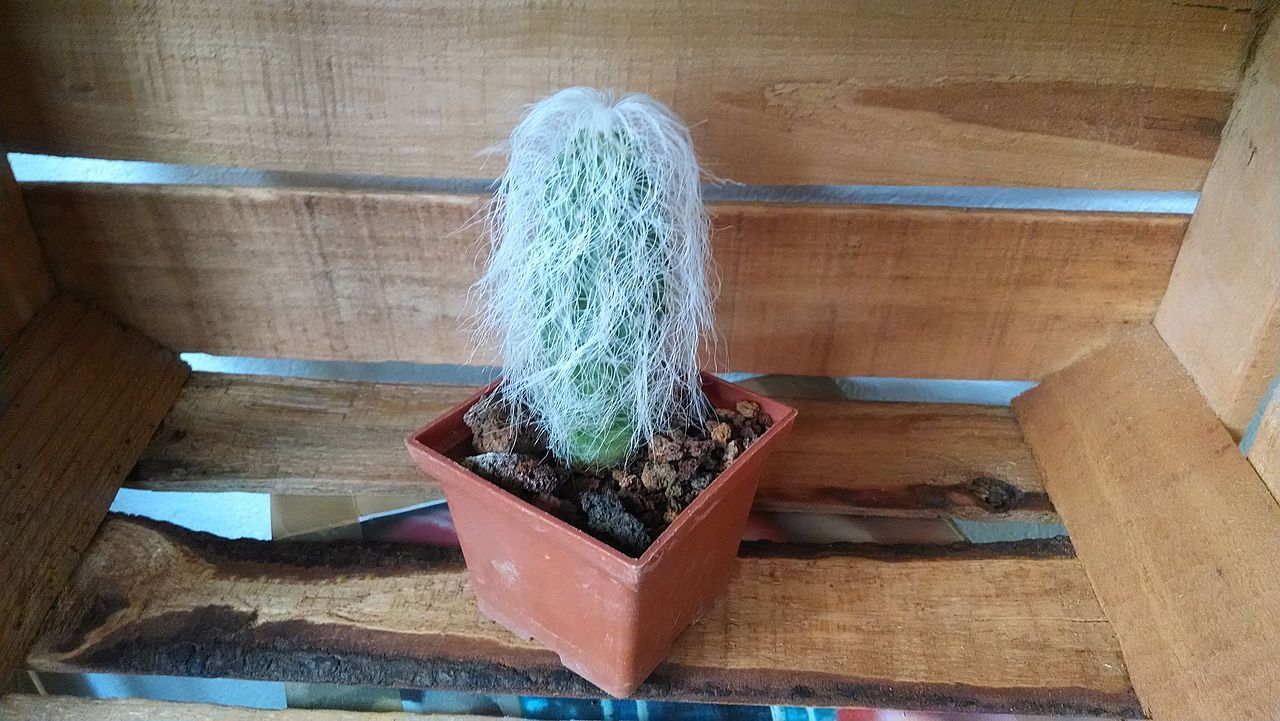
Image - Wikimedia / Frank Vincentz
El Cephalocereus senilis It is a very curious species of cactus: its stems are covered by long white hairs, a characteristic that gives it the common name of old man cactus or old man's head cactus.
It has a rather slow growth rate, but this should not worry you as it has ornamental value since it is young. So, Why not know their care?
Origin and characteristics of Cephalocereus senilis

Image - Flickr / Amante Darmanin
It is a columnar cactus endemic to Mexico, which reaches up to 15 meters in height. It grows wild in Guanajuato and Hidalgo, where it is threatened by SEMARNAT, and protected from International Trade through the CITES Convention. And it is that being so peculiar, if measures were not taken it would end up becoming extinct, due to the extraction of specimens from their habitat for subsequent sale.
Its growth is slow, being able to grow about 10-15 centimeters in height per year. Develops a stem, usually unbranched. Now, if he suffers any damage, he could take some out to move on. It is also important to say that the more mature specimens do tend to branch from the base.
The hairs that cover it are fine and long, whitish in color, similar to that of human gray hair. Between them they have numerous yellow spines. The flowers they produce are red, yellow or white, and sprout from 10-20 years of age, or when it measures about two meters.
What are the care that must be provided?
El Cephalocereus senilis It is a cactus that is very beautiful in a garden, but also in the patio. In fact, it is common to see it form part of a collection of cacti, which is being grown and enjoyed in pots placed on tables and / or shelves.
The 'old man's head' is the typical plant that can further embellish the room, since being columnar, and being white, it breaks a bit with the rhythm and shapes of the design that was originally given to it.
For this reason, it is very interesting to grow it, since it also resists both cold and sub-zero temperatures quite well. Let's see what you need to know to take care of it correctly:
Location
It is a cactus that must be outside. Ideally, it should be in direct sunlight all day, if possible. But yes, it is VERY important that you get used to being exposed little by little, and gradually.
Putting a plant in the sun when it has been in semi-shade, without having acclimatized it before, can kill it.
Earth
- Flower pot: it is advisable to fill it with substrates that are light and that allow the water to drain. For example, the cheek is a good option. Even if you don't want to spend a lot of money, small-grained construction sand (gravel type), no more than 3mm thick, is very interesting and inexpensive, since a 25kg bag costs less than 1 euro in any product store. of construction. Then, you just have to mix a little with black peat or mulch.
- Garden: the soil in the garden should be equally light. It must not be flooded, or if it does, it must be seen that the water is absorbed quickly. The Cephalocereus senilis it will not withstand a flood if the terrain is very heavy. In case you have doubts, dig a 1m x 1m hole, and fill it with the substrate mentioned above.
Irrigation

Image - Wikimedia / Clamaresan
The frequency of irrigation will not be the same during the summer as in the winter, nor in a place where it rains a lot regularly than in another where it hardly does. Therefore, and taking into account that cacti are very sensitive to excess water, the best and most advisable thing is to water only when the soil or substrate has completely dried.
Now, if we are talking about very young cacti, the kind that are still in 5,5-centimeter-diameter pots, you have to be quite vigilant, especially during the summer season. And is that being in those containers, they have little soil, and it dries quickly. In addition, this is a problem for these very small plants, since they too dehydrate quickly.
Subscriber
It's advisable pay it in spring and especially in summer, either with blue nitrophoska, or a fertilizer for cacti. Whatever you choose, you must follow the instructions on the packaging, since this way there will be no risk of overdose.
Multiplication
It multiplies by seeds in spring or summer. These have to be put in pots or trays with cactus substrate, or with vermiculite. Keep it in a bright area, preferably with filtered light, and keep the soil moistened.
If all goes well, they will germinate in about ten to fourteen days.
Transplant
If you want to plant it in the garden or change the pot, you have to do it in spring.
Pests
It can be attacked by mealybugs in summer. Fortunately, if detected early, they are easily removed with diatomaceous earth. To do this, you have to spray / spray the entire cactus with water, and then pour the product over it.
Rusticity

Image - Wikimedia / Frank Vincentz
El Cephalocereus senilis it is a cactus that, once it reaches adulthood, it supports cold, and weak frosts. Where I live, temperatures tend to drop to -2ºC in winter, occasionally in February, and it can endure it without being damaged.
But if you are young you do need some protection.
What did you think of this species?